How To Spruce Up Your Space With Different Interior Styles

Choosing an interior style may be tricky for some especially if there are opposing opinions from the parties involved. Faced with this, most homeowners would try to find a middle ground and embrace the duality of different interior styles with their own unique twist. <span>Even if it sounds intimidating at first, creating a customised interior is easier than you think with the right tips and tricks. With a play on textures, colours and furnishings, creating a beautiful coherent space with varied styles can be done tastefully with functionality in mind. Don’t be afraid to infuse your personal touch through meaningful decor items, cherished mementos, or artwork that resonates with you.
Here are five ways to blend and combine interior design styles to fashion a space that is genuinely distinctive and a true reflection of your personal taste.
1. Adhere To The 80/20 Rule
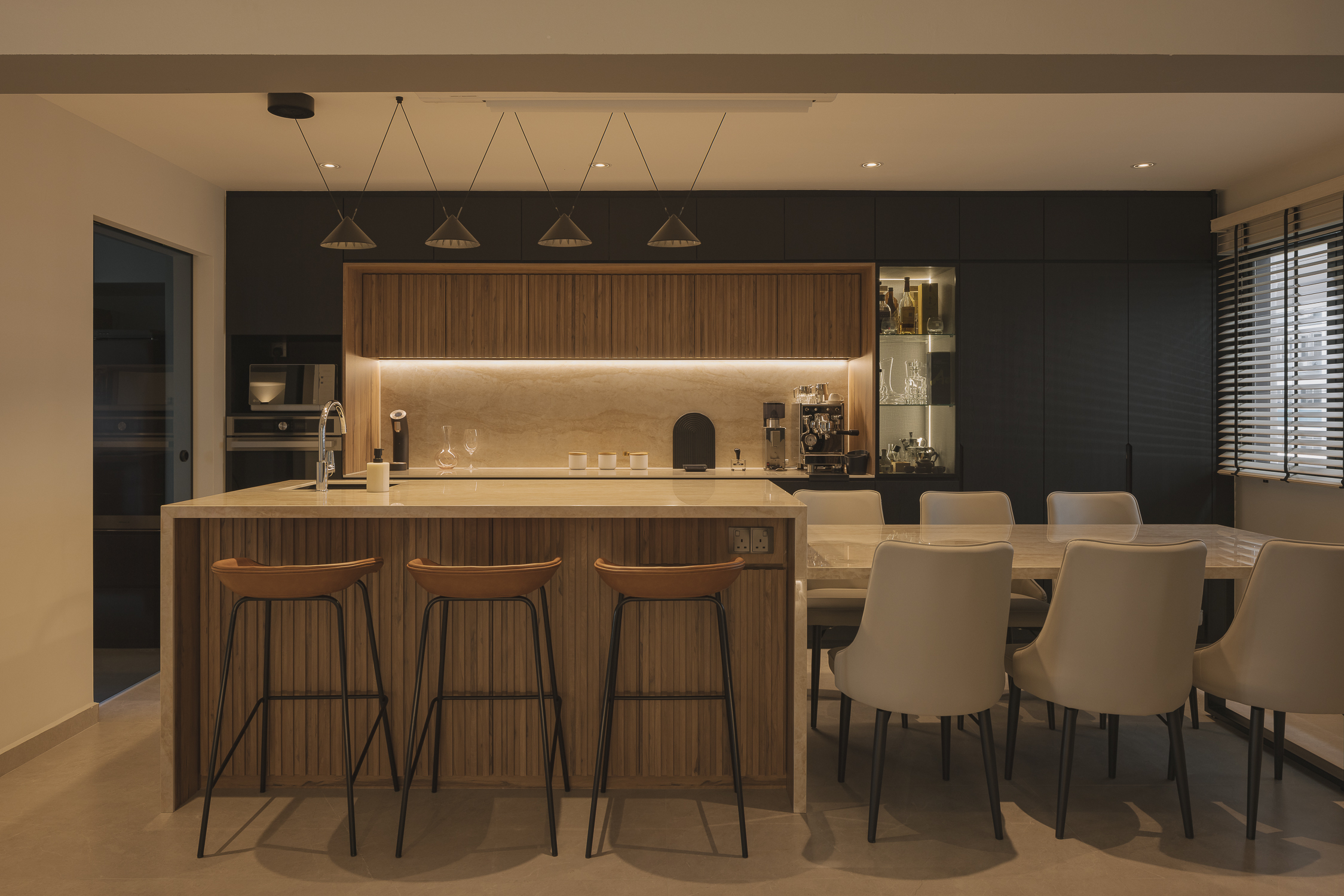
The 80/20 principle emphasises giving dominance to one style while having the others complement it. This ensures a coherent collaboration of design styles rather than conflicting with one another.
Allocate 80% of the room to one design style and reserve 20% for the other. Just like this Modern Luxe+Scandi Executive Maisonette unit integrates Modern Luxury and Scandinavian design elements in the suggested proportions. You’ll notice the predominantly earthy neutral colour scheme with clean lines culminate into a significantly Scandi-style interior (our primary 80%). The incorporation of accent lighting and black cabinetry introduces Modern Luxury style, covering the remaining 20%.
You can slightly adjust the proportions, particularly if you intend to incorporate more than two design styles.
2. Harmonise Using A Unified Colour Scheme

Selecting the appropriate colour scheme is among the most efficient ways to create harmony when merging various design styles. An excess of colours can result in a cluttered appearance for your space. In this situation, a complementary colour palette helps in creating a more unified and cohesive look, even when the styles themselves differ.
Take for example this stunning Scandinavian Bohemian resale unit that looks straight out of a Pinterest board. The combination of Scandinavian and Bohemian design styles with a deep green base colour feels easy on the eyes. This also allows a balanced contrast to the space when paired with soft neutral furnishings, which contributes to a cohesive appearance. Consider using versatile colours such as beige, light brown, and white. Additionally, you may throw in accent hues like deep browns and greys.
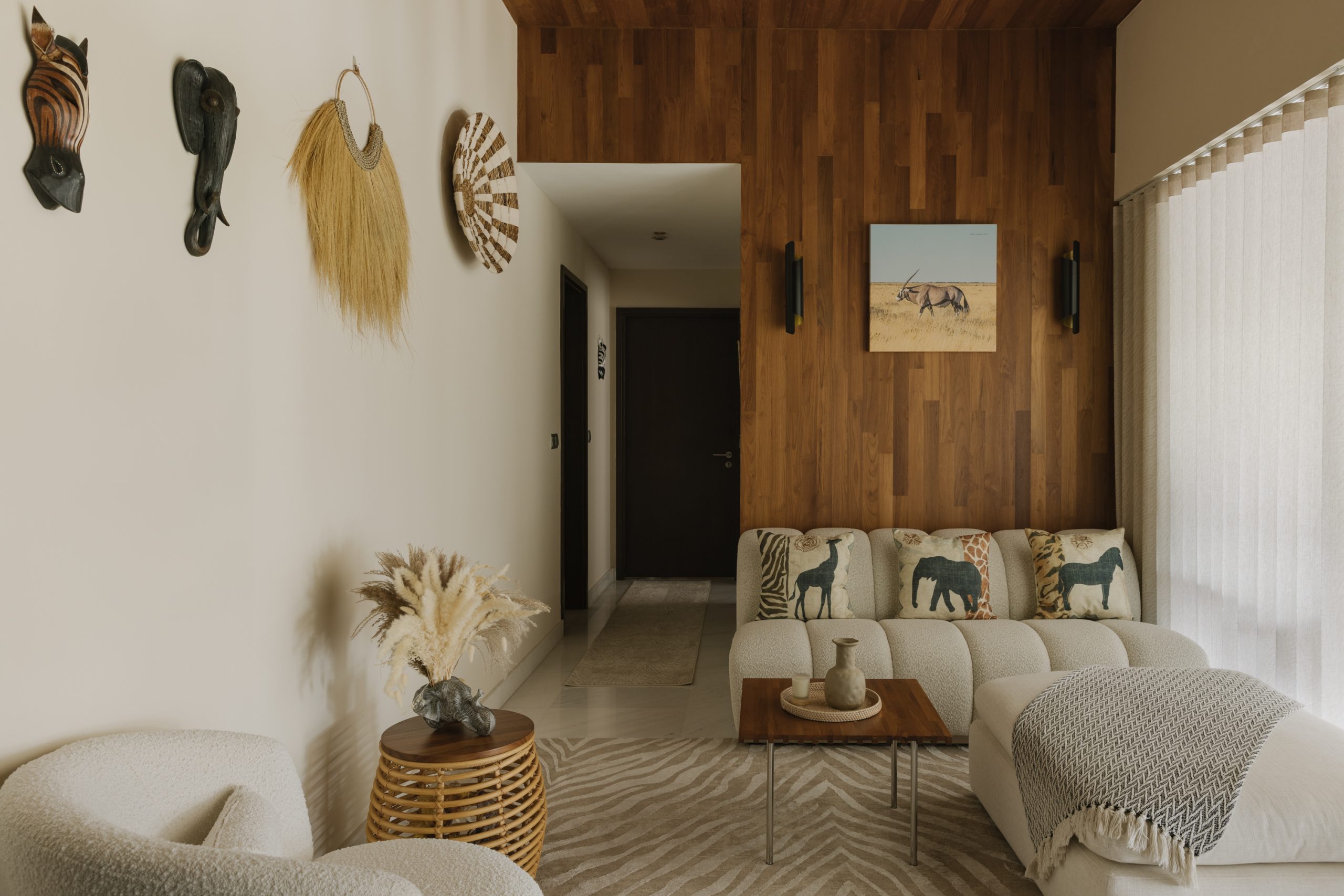
Soothing shades of sandy neutrals goes with pretty much any bold colours. As seen in this African Minimalist condo unit, the Burmese teak timber cladding brings in warmth and vibrancy to the overall minimalist nature of the interior. To bring some oomph to the space, add patterned textiles with a similar shade with the rest of the furnishings so that it blends seamlessly — enhancing a timeless yet distinctive design style.
3. Find A Focal Point
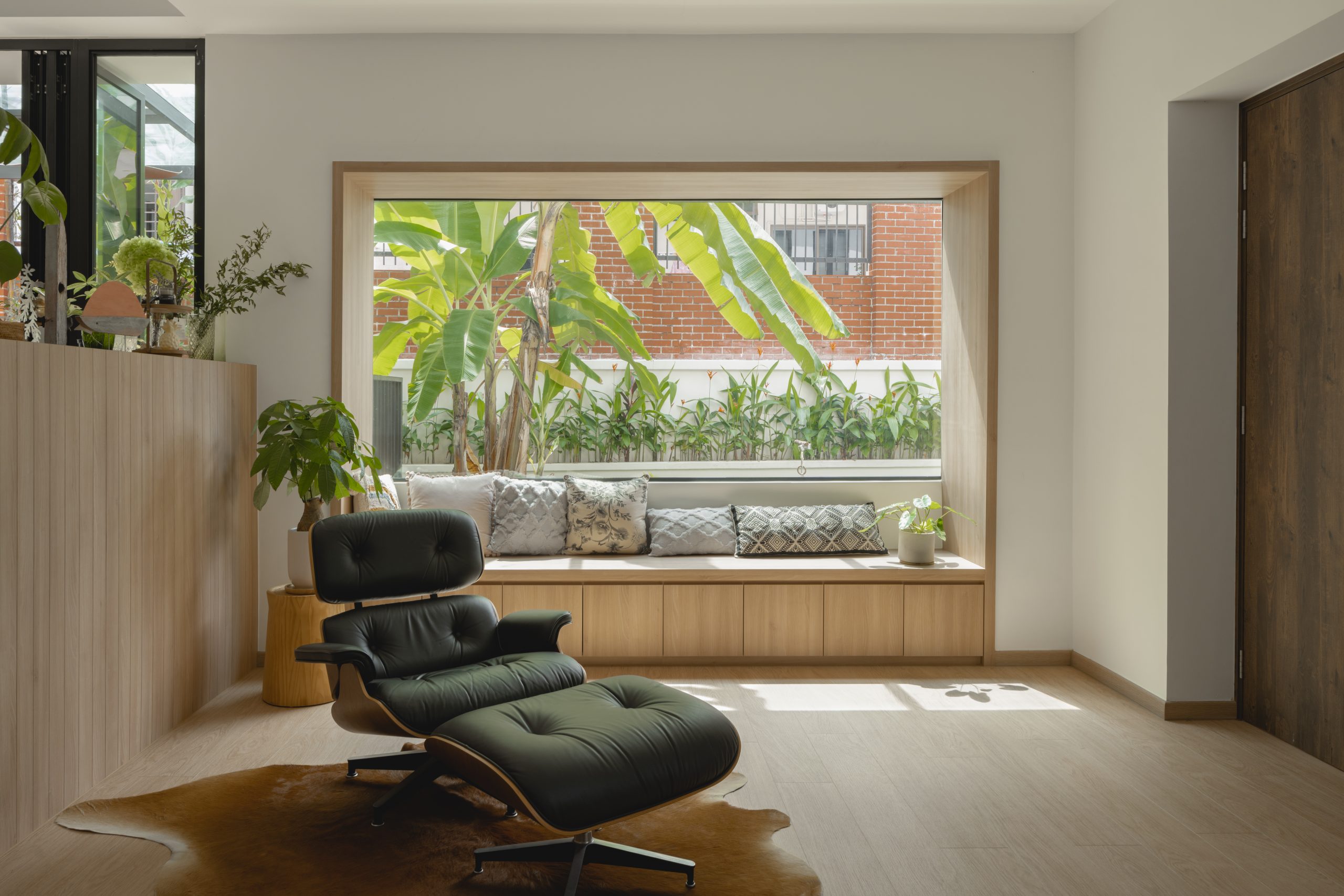
Integrating focal points can help anchor the space. Whether it’s a statement piece of furniture, an art installation, or an accent wall, strategically placing focal points can draw the eye and create a cohesive narrative that ties together disparate design styles. Having a spacious home allows more opportunities to showcase compelling focal points such as this Japandi home, the bay window seat overlooking the outdoor greenery effortlessly creates visual interest. Additionally, with the use of natural materials such as light wood carpentry and flooring creates a seamless spatial flow.
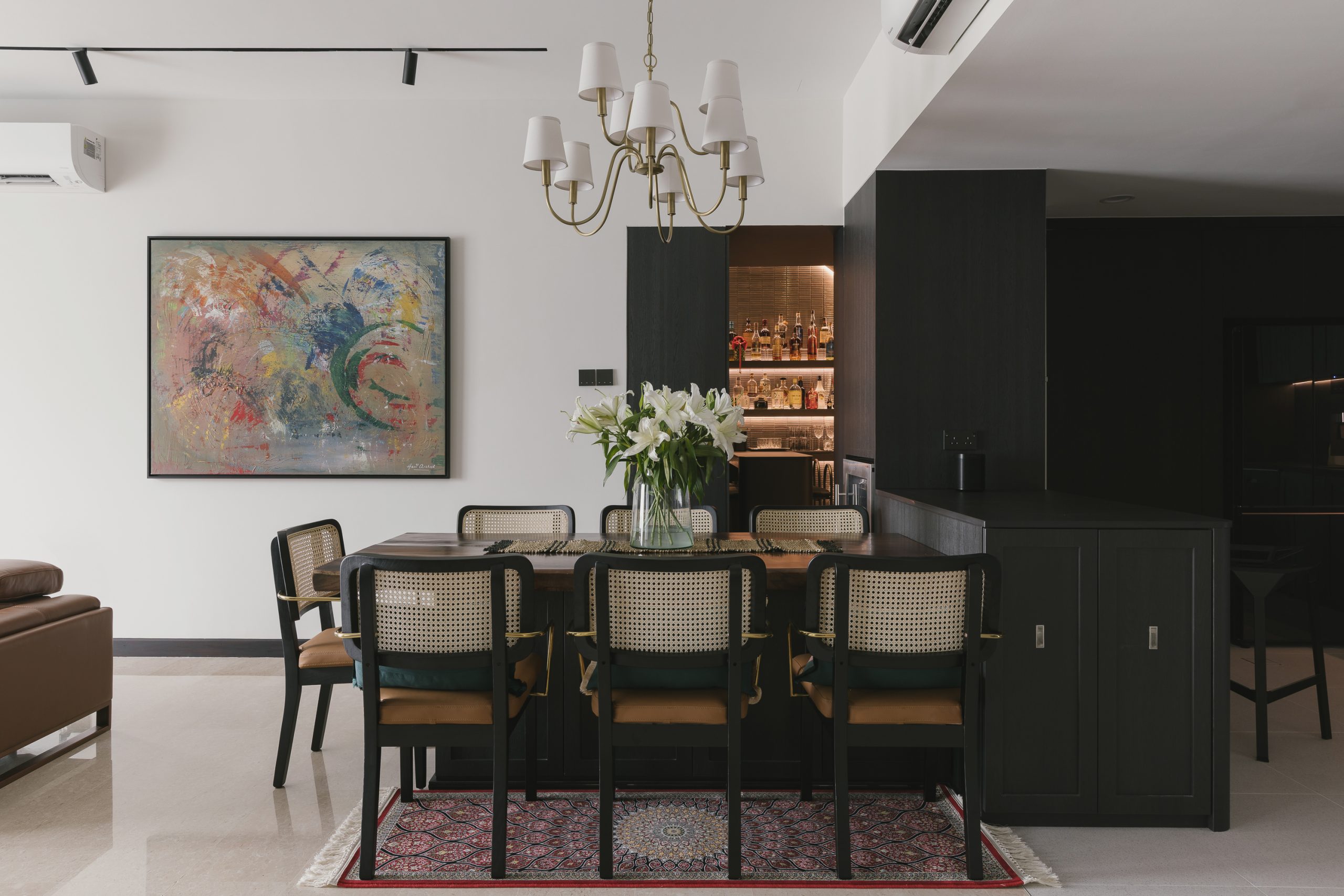
Alternatively, you can designate a piece of artwork as the focal point. Ensure its’ placement in a prominent location such as the communal space. You might also consider highlighting it by placing spotlights to further showcase the artwork for a grandeur allure.
4. Opt For Design Styles that Share Common Features
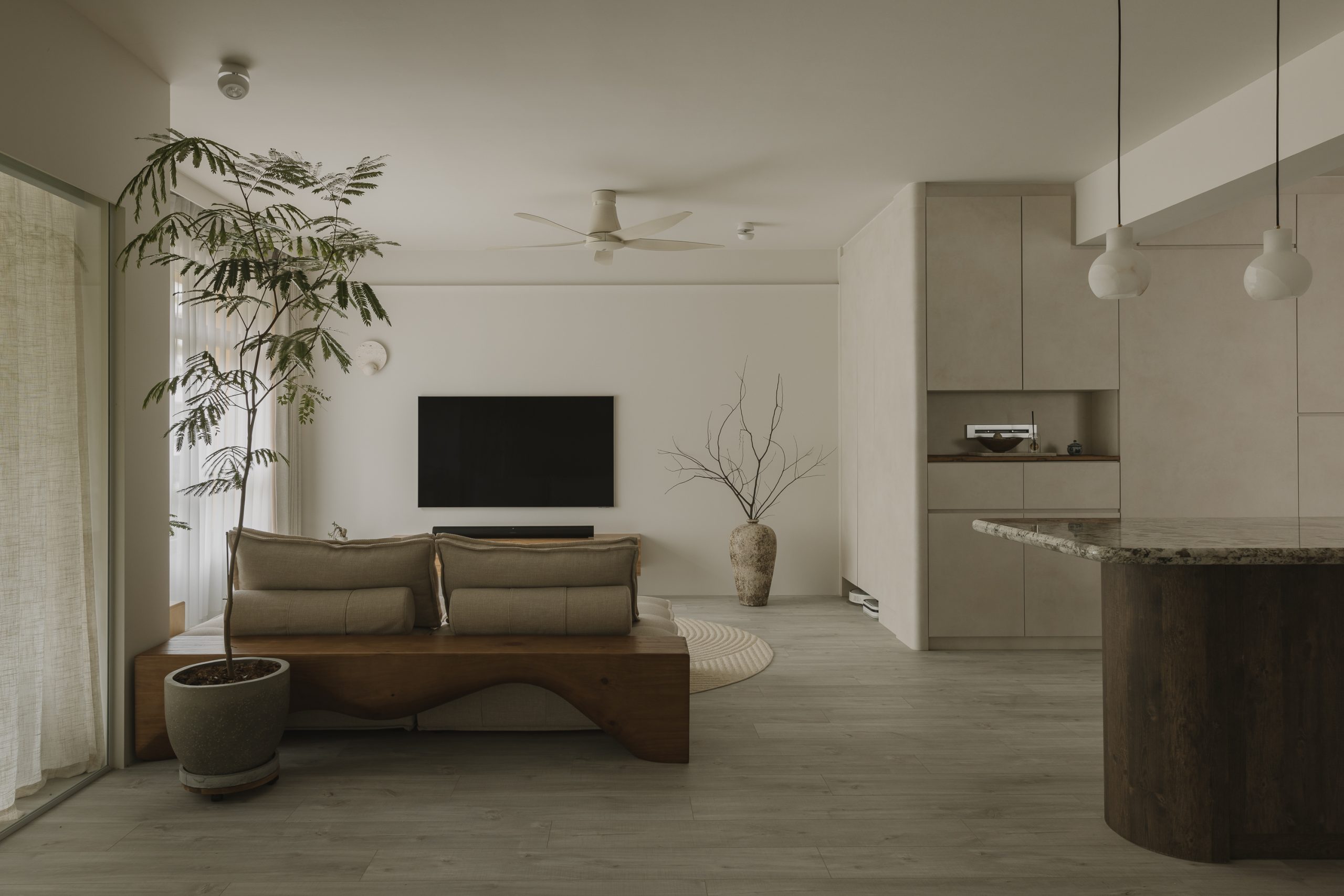
Not a fan of bold designs? Fret not, you can still mix and match design styles whilst playing it safe by choosing design styles that share similarities and common elements.
An example is putting together Wabi Sabi and Minimalist design. As they share similar characteristics like simplicity, functionality and natural materials. When you put them together, you’ll find it much easier to coherently blend them together as they are considered ‘safe colours’.
5. Maintain Proportion And Scale Within The Interior
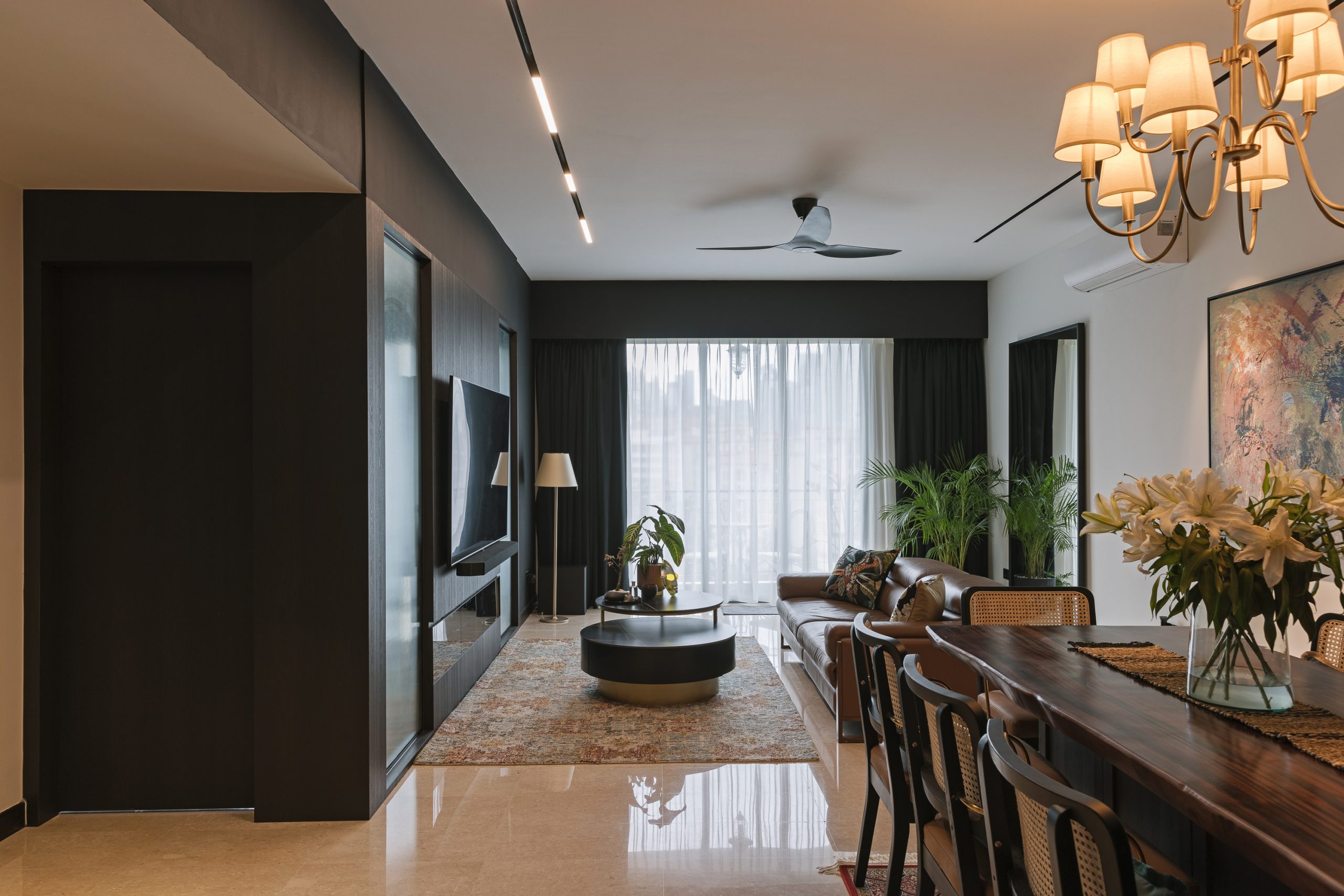
It’s easy to overlook the dimensions of decor items and furnitures when you’re crafting a customised design. Ensure that the size of the furnishings are proportionate to the scale of the space for a well-balanced look. To fill in negative spaces, add cosy rugs or plant pots as shown in this Mid-Century Modern condo unit. Avoid placing bulky furniture in a small room. Similarly, a small coffee table would not complement a large modular sofa.
The art of mixing interior styles is a creative process that demands a keen eye for detail, an understanding of design fundamentals, and a willingness to experiment. By finding common ground, balancing contrasts, creating focal points, and infusing personal touches, you can achieve a harmonious fusion of diverse design aesthetics that transform your space into a captivating reflection of your individuality.
CONSULT OUR DESIGNER
-
11 November 2025 TIPS & GUIDES
Future-Proofing Your Home: Designing for the Years Ahead
-
6 November 2025 DESIGN INSPIRATIONHOME TOUR
Reignwood Hamilton at Scotts: A Redecoration Project
-
23 October 2025 DESIGN INSPIRATIONTIPS & GUIDES
Why Layering Textures Is the Secret to a Cozy, Elevated Home
-
13 October 2025 TIPS & GUIDES
6 Lighting Tips for Interior Design in Modern Homes in Singapore
-
9 October 2025 TIPS & GUIDES
7 Space-Saving Hacks for Modern Small Condo Design in Singapore
-
9 October 2025 TIPS & GUIDES
How to Choose the Right Colour Palette for Your Renovation Interior Design

